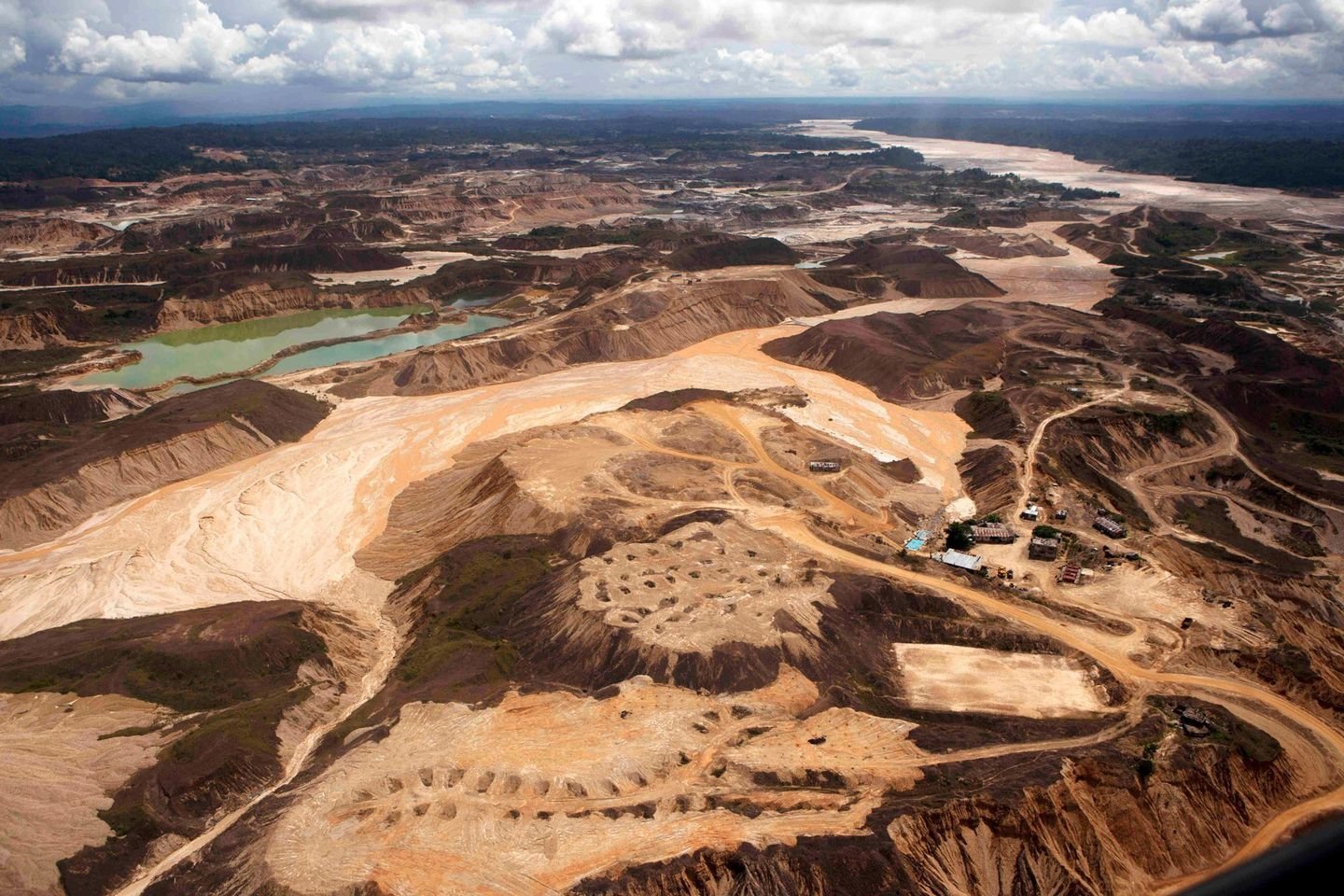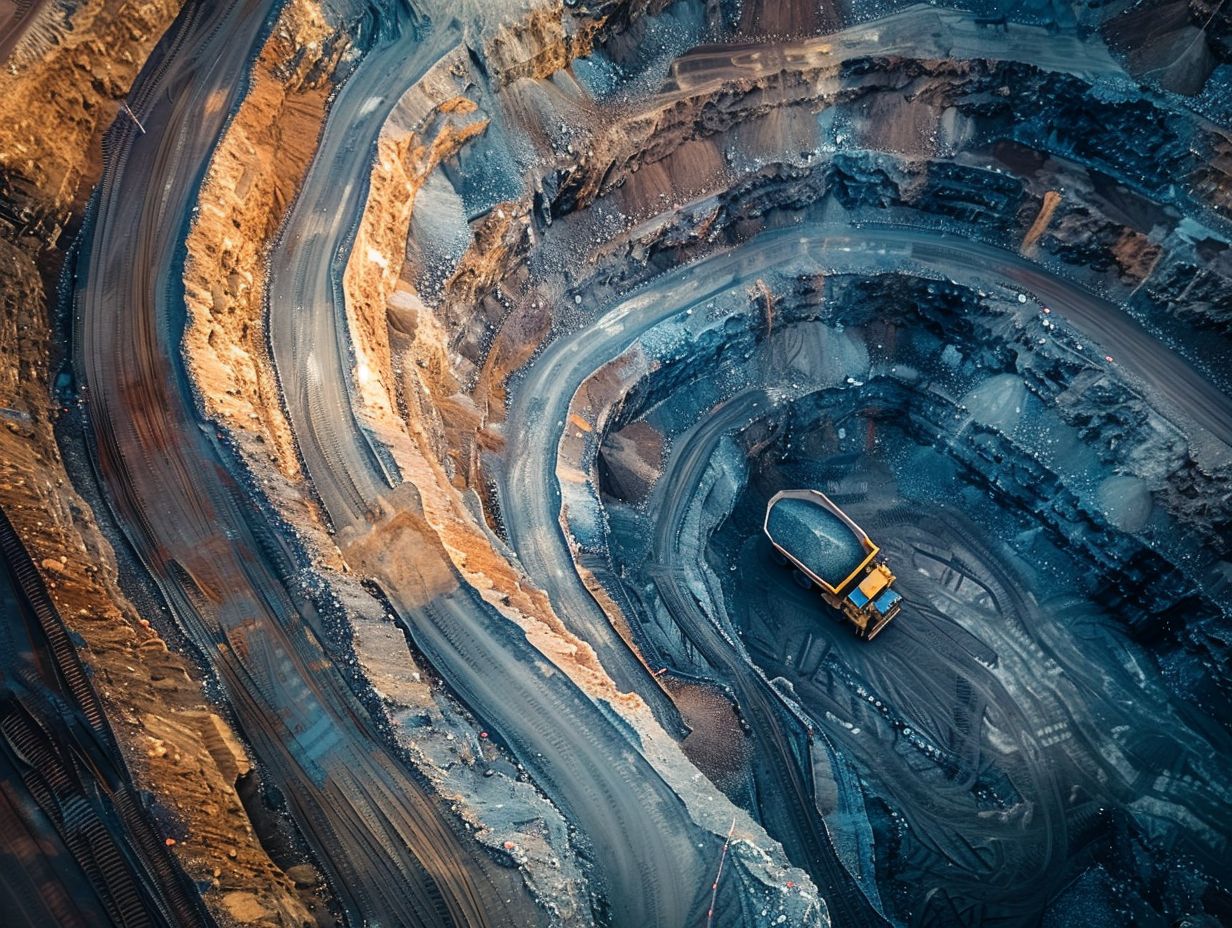Toxic Legacy Of Abandoned Gold Mines: Environmental Hazards

Table of Contents
Water Contamination from Abandoned Gold Mines
Abandoned gold mines frequently contaminate water sources, posing severe risks to both human and ecological health. This contamination primarily stems from two major sources: acid mine drainage (AMD) and tailings pond leakage.
Acid Mine Drainage (AMD)
Acid mine drainage is a complex process driven by the oxidation of pyrite (iron sulfide), a common mineral found in many gold-bearing rocks. When exposed to air and water after mining, pyrite reacts, producing sulfuric acid and releasing heavy metals such as arsenic, lead, and mercury into the surrounding environment. This acid mine drainage then leaches into water bodies, causing widespread water pollution.
- Examples of affected water bodies: Numerous rivers and lakes worldwide bear the scars of AMD, showing significantly degraded water quality and lifeless aquatic ecosystems. The Colorado River in the US, for example, has suffered from AMD impacts from numerous historic gold mines.
- Health risks associated with AMD-contaminated water: Drinking or using water contaminated with heavy metals from AMD can lead to serious health issues, including arsenic poisoning, lead poisoning, and mercury poisoning. These heavy metals accumulate in the body over time causing neurological damage, organ failure, and cancer.
- Difficulty and cost of remediation: Cleaning up AMD contamination is a complex, expensive, and time-consuming process, often requiring decades of continuous treatment and monitoring. The scale of the problem often overwhelms available resources.
Tailings Ponds and their Leakage
Tailings ponds are large impoundments designed to store the waste materials left over after gold extraction. These tailings are often laden with toxic substances, including heavy metals and cyanide. The failure or leakage of these tailings ponds can lead to catastrophic releases of toxic materials into surrounding environments, causing widespread water contamination and ecosystem damage.
- Examples of tailings pond failures: Several catastrophic tailings pond failures have occurred worldwide, causing widespread environmental devastation and significant loss of life. These failures highlight the inherent risks associated with these structures.
- Types of toxic materials found in tailings: Tailings typically contain a cocktail of harmful substances, including heavy metals (arsenic, lead, mercury, cadmium, zinc), cyanide, and other chemicals used in the mining process.
- Long-term effects on ecosystems: Tailings pond leakage can have devastating and long-lasting impacts on aquatic and terrestrial ecosystems. The contamination can destroy habitats, kill aquatic life, and prevent the regeneration of vegetation.
Soil Degradation and Contamination around Abandoned Gold Mines
The land surrounding abandoned gold mines suffers significant soil degradation and contamination. This is largely due to the accumulation of heavy metals and the instability of the land itself.
Heavy Metal Accumulation
Mining activities release significant amounts of heavy metals into the soil. These heavy metals accumulate in the soil, reducing its fertility and impacting plant life. The consequences spread through the food chain, posing risks to human health.
- Specific heavy metals found: Cadmium, zinc, copper, and other heavy metals commonly accumulate in the soil around abandoned gold mines, far exceeding safe limits for agriculture.
- Effects on plant growth and biodiversity: Heavy metal contamination inhibits plant growth and reduces biodiversity. This leads to barren landscapes and diminished ecosystem services.
- Risks to human health through food chains: Contaminated soil can affect crops and livestock, transferring heavy metals into the food chain and creating risks for human consumers.
Land Instability and Erosion
Mining activities often destabilize the land, making it prone to landslides, erosion, and other forms of land instability. The removal of topsoil and the creation of open pits and shafts increase the susceptibility to these events.
- Examples of mine collapses: Abandoned mines are frequently subject to collapses, endangering surrounding communities and infrastructure. These collapses pose significant risks for human life and property.
- Impact on surrounding communities and infrastructure: Land instability from abandoned gold mines can damage roads, buildings, and other infrastructure, leading to costly repairs and disruptions.
- Long-term land remediation challenges: Remediating unstable land and restoring it to a safe and productive condition is a long-term and complex challenge, often requiring significant investment.
Air Pollution from Abandoned Gold Mines
Abandoned gold mines can also contribute to air pollution, impacting air quality and human health.
Dust and Particulate Matter
Wind erosion of exposed tailings and mine waste materials releases dust and particulate matter containing heavy metals into the air. This impacts visibility and creates respiratory problems.
- Respiratory problems associated with dust inhalation: Inhaling dust containing heavy metals can lead to various respiratory illnesses, including bronchitis, asthma, and lung cancer.
- Impact on visibility and climate: High levels of particulate matter can reduce visibility and contribute to regional haze, impacting both air quality and climate.
- Difficulty in controlling airborne pollutants from abandoned sites: Controlling airborne pollutants from abandoned mines is challenging and often requires expensive mitigation measures, such as stabilization of mine waste and vegetation planting.
Methane and other Greenhouse Gas Emissions
Abandoned mines can release methane and other greenhouse gases into the atmosphere. These gases contribute to global warming and climate change.
- The sources of these emissions: Methane and other gases are released from decaying organic matter within the mine workings and from the decomposition of pyrite.
- Their impact on global warming: These greenhouse gas emissions contribute to the increasing concentration of greenhouse gases in the atmosphere, accelerating climate change.
- The difficulty in measuring and mitigating these emissions: Measuring and mitigating greenhouse gas emissions from abandoned mines is a challenging task, often requiring specialized monitoring and remediation techniques.
Conclusion
The toxic legacy of abandoned gold mines presents a significant and ongoing environmental challenge. The long-term consequences of water, soil, and air pollution from these sites demand urgent attention. Responsible mine closure and remediation plans are crucial to mitigate the environmental hazards associated with abandoned gold mines. We must prioritize sustainable practices in the gold mining industry and invest in the remediation of existing abandoned sites to prevent further environmental damage. Learn more about abandoned mine remediation and support initiatives promoting responsible gold mining and preventing the toxic legacy of abandoned gold mines. Together, we can work towards a future where the pursuit of gold doesn't come at the cost of our planet's health.

Featured Posts
-
 Assessing The Monkey 2025 A Critical Look At A Potentially Problematic Adaptation
May 06, 2025
Assessing The Monkey 2025 A Critical Look At A Potentially Problematic Adaptation
May 06, 2025 -
 Razdelis Li Patrik Shvartsenegger I Ebbi Chempion Dlya Fotosessii Kim Kardashyan
May 06, 2025
Razdelis Li Patrik Shvartsenegger I Ebbi Chempion Dlya Fotosessii Kim Kardashyan
May 06, 2025 -
 Nba L Incertitude Plane Sur Le Retour De Popovich Aux Spurs
May 06, 2025
Nba L Incertitude Plane Sur Le Retour De Popovich Aux Spurs
May 06, 2025 -
 The Environmental Impact Of Abandoned Gold Mines
May 06, 2025
The Environmental Impact Of Abandoned Gold Mines
May 06, 2025 -
 Gregg Popovichs Retirement A Legacy Of Nba Wins
May 06, 2025
Gregg Popovichs Retirement A Legacy Of Nba Wins
May 06, 2025
